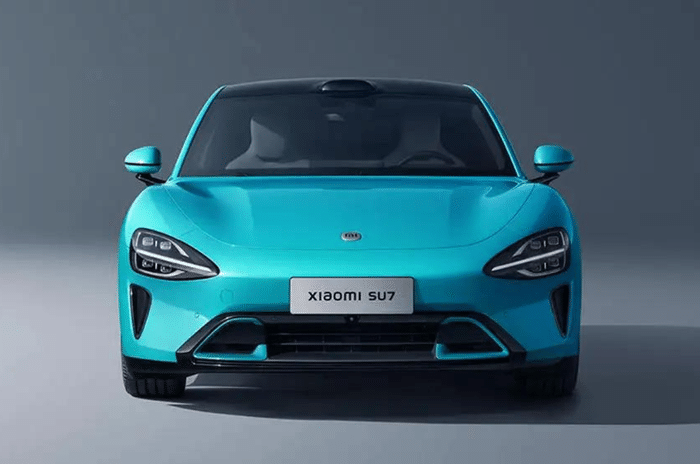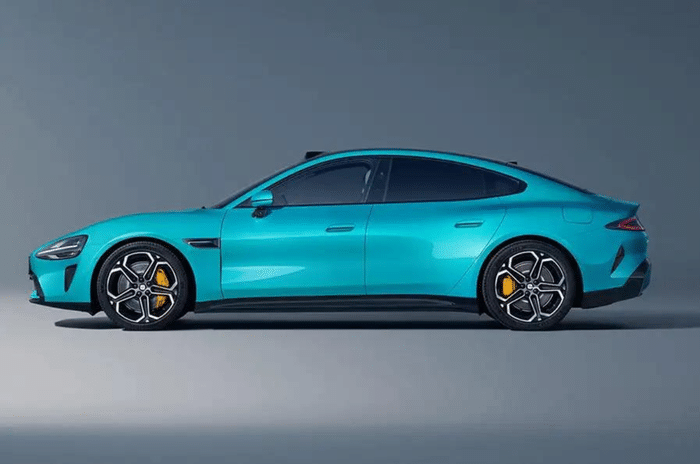Chinese consumer electronics company Xiaomi announced its plans to enter the EV market almost three years back. Now, the firm has finally unveiled its first production car, the SU7 sedan, in Shanghai and has pegged it as the Porsche Taycan's rival. The SU7 will go on sale in China first in 2024 and will be among a range of new models planned by Xiaomi, which has set itself lofty goals.
At its unveiling on Thursday (December 28), Xiaomi CEO Lei Jun said the company is seeking to become one of the world’s top five carmakers within the next 15 to 20 years. Pilot production of the SU7 has already begun at Xiaomi’s factory in Beijing.
- Platform can support 150kWh battery packs
- Has a drag co-efficient of just 0.195
- Rivals the Porsche Taycan and Audi e-tron GT
Xiaomi SU7 powertrain
The basis for Xiaomi’s first production model is a new electric car platform that's internally codenamed Modena. It has been conceived to support both 400-volt and 800-volt electric architectures, as well as single- and dual-motor drivetrains.
Powering the SU7 is Xiaomi’s in-house developed electric motors that mimick internal combustion engine's nomenclature – the V6, V6s and V8s. The base V6 produces 299hp and 400Nm of torque, and will exclusively be used with the 400-volt architecture. The V6s, compatible with the 800-volt architecture, adds 75hp and 100Nm of torque to the base V6 variant. Both operate at up to 21,000rpm, according to Xiaomi.

The dual-motor SU7 model, which combines the V6 and V6s, puts out 673hp with a 0-100kph time of 2.78sec. Due in 2025, the V8s or so-called 'HyperEngine' is claimed to produce up to 679hp and 634Nm of torque, operating on an 800-volt architecture. It is capable of reaching operating speeds of up to 27,200rpm, according to Jun.
Xiaomi SU7 range and battery
The initial models will feature a 101kWh CATL-supplied lithium-ion battery with cell-to-body construction and 14 layers of protection that deliver a range of up to 800km on the Chinese light-duty vehicle test cycle (CLTC). Jun also highlighted the SU7's rapid charging capabilities, with the potential to gain up to 220km of range with a 5-minute charge and an impressive 510km on a 15-minute charge. Additionally, Xiaomi has developed a larger 132kWh battery variant, with a range of up to 998km. The platform is designed to accommodate an even more substantial 150kWh battery, enabling a range of up to 1,200km.
Xiaomi SU7 design
The styling of the SU7 was developed in-house under the leadership of Xiaomi’s head of design, Sawyer Li who helped design cars like the BMW iX and Circular Vision Concept, during a five-year stint at the German carmaker.

At 4,997mm in length, 1,963mm in width and 1,440mm in height, the new sedan is 34mm longer, 3mm narrower and 44mm higher than the Porsche Taycan, and has a wheelbase that's 100mm longer than its German rival at 3,000mm.
The sleek lines contribute to a claimed drag co-efficient of just 0.195 making it one of the most aerodynamically efficient production cars yet. Apart from being highly aerodynamic, Xiaomi also claims the SU7 boasts high levels of structural integrity. The company, however, has not yet officially revealed the interior of the SU7 sedan.



























